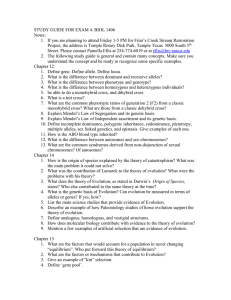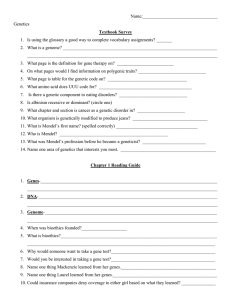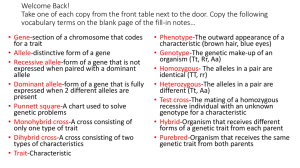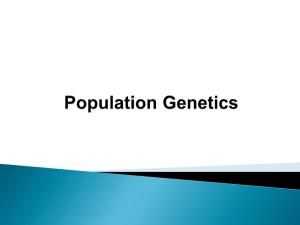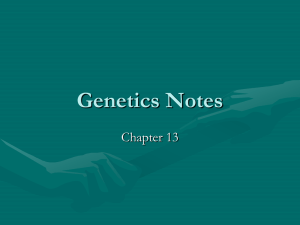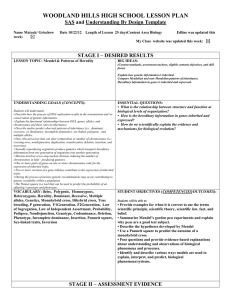STUDY GUIDE FOR EXAM 4. BIOL 1406 Chapter 12.
advertisement
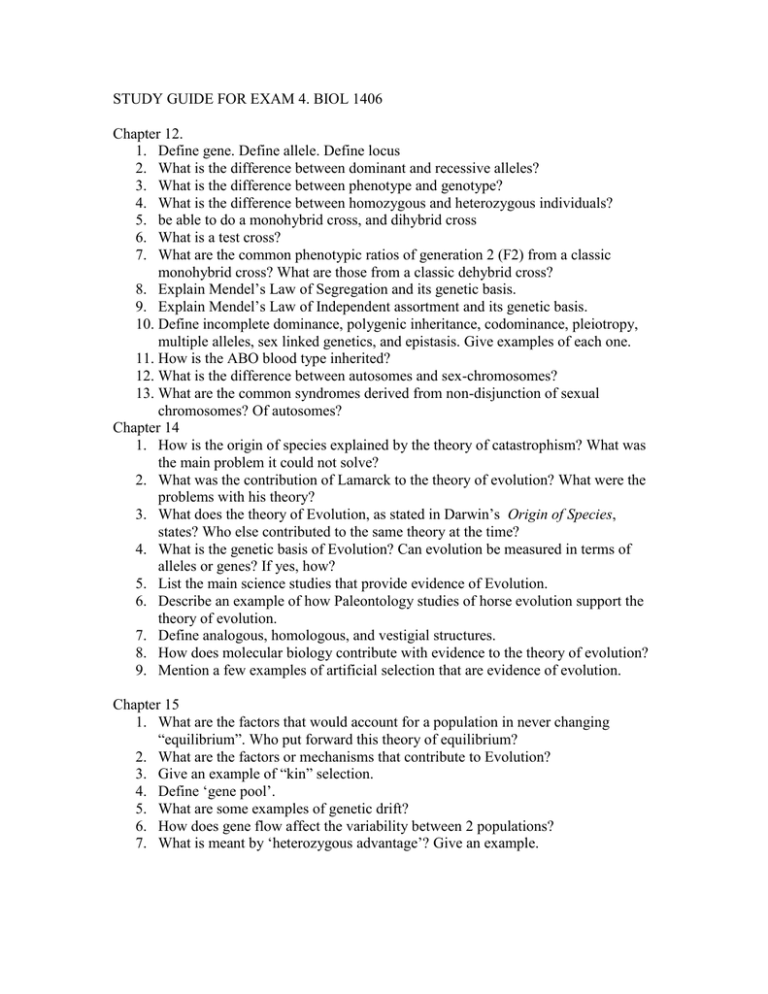
STUDY GUIDE FOR EXAM 4. BIOL 1406 Chapter 12. 1. Define gene. Define allele. Define locus 2. What is the difference between dominant and recessive alleles? 3. What is the difference between phenotype and genotype? 4. What is the difference between homozygous and heterozygous individuals? 5. be able to do a monohybrid cross, and dihybrid cross 6. What is a test cross? 7. What are the common phenotypic ratios of generation 2 (F2) from a classic monohybrid cross? What are those from a classic dehybrid cross? 8. Explain Mendel’s Law of Segregation and its genetic basis. 9. Explain Mendel’s Law of Independent assortment and its genetic basis. 10. Define incomplete dominance, polygenic inheritance, codominance, pleiotropy, multiple alleles, sex linked genetics, and epistasis. Give examples of each one. 11. How is the ABO blood type inherited? 12. What is the difference between autosomes and sex-chromosomes? 13. What are the common syndromes derived from non-disjunction of sexual chromosomes? Of autosomes? Chapter 14 1. How is the origin of species explained by the theory of catastrophism? What was the main problem it could not solve? 2. What was the contribution of Lamarck to the theory of evolution? What were the problems with his theory? 3. What does the theory of Evolution, as stated in Darwin’s Origin of Species, states? Who else contributed to the same theory at the time? 4. What is the genetic basis of Evolution? Can evolution be measured in terms of alleles or genes? If yes, how? 5. List the main science studies that provide evidence of Evolution. 6. Describe an example of how Paleontology studies of horse evolution support the theory of evolution. 7. Define analogous, homologous, and vestigial structures. 8. How does molecular biology contribute with evidence to the theory of evolution? 9. Mention a few examples of artificial selection that are evidence of evolution. Chapter 15 1. What are the factors that would account for a population in never changing “equilibrium”. Who put forward this theory of equilibrium? 2. What are the factors or mechanisms that contribute to Evolution? 3. Give an example of “kin” selection. 4. Define ‘gene pool’. 5. What are some examples of genetic drift? 6. How does gene flow affect the variability between 2 populations? 7. What is meant by ‘heterozygous advantage’? Give an example. Chapter 16 1. How were organisms assigned to ‘species’ before the development of modern genetics? How has the concept ‘species’ changed? 2. How is species generally defined? 3. What are the 2 most important requirements to produce new species? 4. What is the difference between allopatric and sympatric speciation? 5. What are the main types of isolation that may cause speciation? 6. What is ‘adaptive radiation’? 7. What mechanisms can maintain a species separated from others as such? 8. Why are mules sterile? 9. What are the causes of species extinctions?
